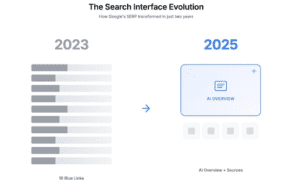Artificial Intelligence (AI) has revolutionized countless industries, and healthcare is no exception. Among the most groundbreaking advancements are AI-powered diagnostic tools, which are transforming how diseases are detected, diagnosed, and treated. These tools leverage machine learning, deep learning, and natural language processing to analyze vast amounts of data, providing faster, more accurate, and personalized healthcare solutions.
The Rise of AI in Medical Diagnostics
The integration of AI into medical diagnostics has been a game-changer. Traditionally, diagnosing diseases relied heavily on human expertise, which, while invaluable, is prone to errors and limitations. For instance, radiologists might miss subtle signs in imaging scans, or pathologists could misinterpret lab results. However, AI-powered tools are designed to augment human capabilities, reducing errors and improving efficiency.
One of the key reasons for the rise of AI in diagnostics is the exponential growth of medical data. From electronic health records (EHRs) to medical imaging and genomic data, the sheer volume of information is overwhelming for healthcare professionals. AI algorithms, on the other hand, can process and analyze this data in seconds, identifying patterns and anomalies that might otherwise go unnoticed.
Key Innovations in AI-Powered Diagnostic Tools
AI in Medical Imaging
Medical imaging is one of the most prominent areas where AI has made significant strides. Tools like computer-aided detection (CAD) systems are now being used to analyze X-rays, MRIs, CT scans, and mammograms. For example, AI algorithms can detect early signs of breast cancer in mammograms with remarkable accuracy, often outperforming human radiologists.
Moreover, AI-powered imaging tools are not limited to cancer detection. They are also being used to diagnose cardiovascular diseases, neurological disorders, and musculoskeletal conditions. By analyzing imaging data, these tools can identify subtle changes in tissue structure, blood flow, or organ function, enabling early intervention and better patient outcomes.
AI for Pathology and Lab Diagnostics
Pathology is another field where AI is making a significant impact. Traditionally, pathologists examine tissue samples under a microscope to diagnose diseases like cancer. However, this process is time-consuming and subject to human error. AI-powered tools, such as digital pathology platforms, can analyze tissue samples with incredible precision, identifying cancerous cells and other abnormalities.
In addition to pathology, AI is transforming lab diagnostics. For instance, AI algorithms can analyze blood test results to detect infections, autoimmune diseases, and metabolic disorders. These tools not only speed up the diagnostic process but also reduce the likelihood of misdiagnosis.
AI in Genomics and Personalized Medicine
Genomics is a complex field that involves analyzing an individual’s genetic makeup to identify potential health risks. AI-powered tools are now being used to analyze genomic data, enabling healthcare providers to offer personalized treatment plans. For example, AI can identify genetic mutations associated with certain cancers, allowing doctors to recommend targeted therapies.
Furthermore, AI is playing a crucial role in drug discovery and development. By analyzing genomic data, AI algorithms can identify potential drug targets and predict how patients will respond to specific treatments. This not only accelerates the drug development process but also ensures that patients receive the most effective therapies.
AI for Early Disease Detection
Early detection is critical for improving patient outcomes, and AI-powered tools are making this possible. For instance, wearable devices equipped with AI algorithms can monitor vital signs like heart rate, blood pressure, and oxygen levels in real-time. If any abnormalities are detected, the device can alert the user and recommend further medical evaluation.
Similarly, AI is being used to analyze data from routine check-ups and screenings. By identifying subtle changes in a patient’s health, these tools can detect diseases like diabetes, hypertension, and even Alzheimer’s at an early stage. This allows for timely intervention and better management of chronic conditions.
AI in Mental Health Diagnostics
Mental health is an often-overlooked area of healthcare, but AI is changing that. AI-powered tools are now being used to diagnose mental health conditions like depression, anxiety, and PTSD. For example, natural language processing (NLP) algorithms can analyze speech patterns and text to identify signs of mental distress.
Additionally, AI-powered chatbots and virtual therapists are providing support to individuals struggling with mental health issues. These tools can offer personalized recommendations, monitor progress, and even alert healthcare providers if a patient’s condition worsens.
The Impact of AI-Powered Diagnostic Tools
The adoption of AI-powered diagnostic tools has had a profound impact on healthcare. For one, these tools have significantly improved diagnostic accuracy. By reducing human error and analyzing data with unparalleled precision, AI is helping healthcare providers make more informed decisions.
Moreover, AI-powered tools are enhancing efficiency. Tasks that once took hours or even days can now be completed in minutes, freeing up healthcare professionals to focus on patient care. This is particularly important in resource-limited settings, where AI can help bridge the gap between demand and supply.
Another significant impact is the democratization of healthcare. AI-powered tools are making high-quality diagnostics accessible to people in remote and underserved areas. For example, mobile apps equipped with AI algorithms can analyze symptoms and provide preliminary diagnoses, enabling individuals to seek timely medical attention.
Challenges and Future Directions
Despite their potential, AI-powered diagnostic tools are not without challenges. One major concern is data privacy. Since these tools rely on vast amounts of patient data, ensuring its security is paramount. Additionally, there is the issue of bias in AI algorithms. If the data used to train these tools is not diverse, the algorithms may produce inaccurate or unfair results.
Looking ahead, the future of AI-powered diagnostics is bright. Advances in quantum computing and edge AI are expected to further enhance the capabilities of these tools. Moreover, as AI becomes more integrated into healthcare systems, we can expect to see more collaborative efforts between humans and machines, leading to better patient outcomes.
Conclusion
AI-powered diagnostic tools are revolutionizing healthcare, offering faster, more accurate, and personalized solutions. From medical imaging and pathology to genomics and mental health, these tools are transforming how diseases are detected and treated. While challenges remain, the potential benefits far outweigh the risks. As technology continues to evolve, AI-powered diagnostics will undoubtedly play an even greater role in shaping the future of healthcare.
By embracing these innovations, healthcare providers can improve patient outcomes, enhance efficiency, and make high-quality diagnostics accessible to all. The journey has just begun, and the possibilities are endless.





























